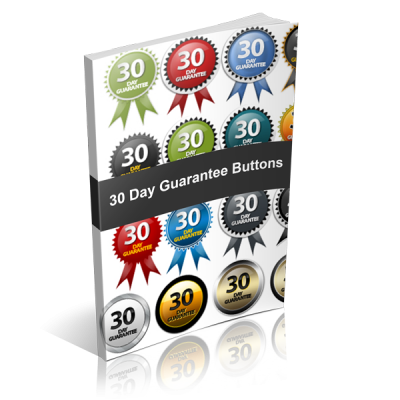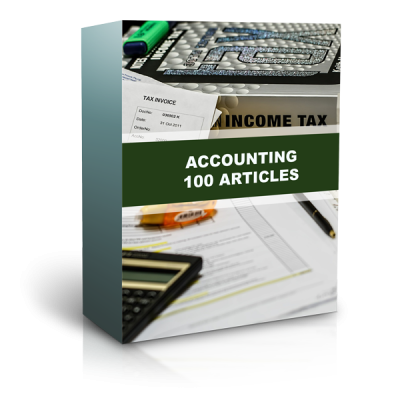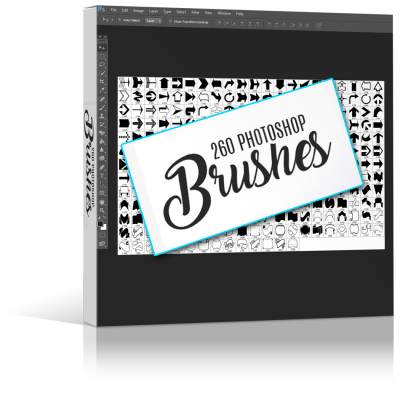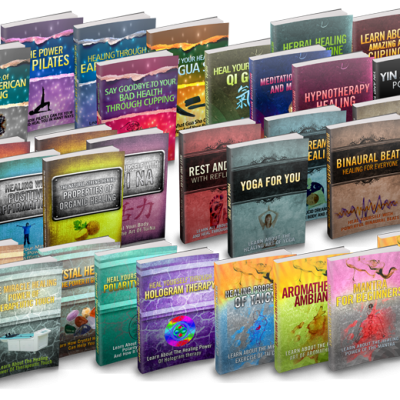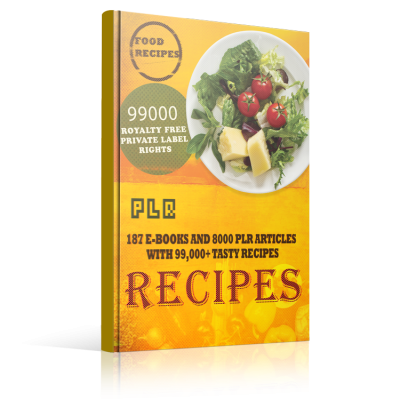What are PLR Articles Content
In internet marketing, private label rights is a license where the author sells most or all of the intellectual property rights to their work. The license is defined by the author of the work and has no legal definition. Private label rights is derived from private labeling.
Similar licenses include resell rights, also used in internet marketing.
The license is used for various digital products such as articles, ebooks, software, graphic templates etc. Because there are many buyers of the same product, the price of a single unit is generally lower than if one would create a similar product from scratch (either by himself or by outsourcing). However, people can also purchase private label content that is limited in distribution, minimizing the number of competing marketers using the same content. (PLR Articles Content)
Private Label Content comes in many different formats, including PLR reports, ebooks, articles, graphics, templates and even videos.
While licenses differ with each author and seller, the basic premise is that the license permits buyers to re-brand the content under their own name and brand (excluding copyright). In general practice this means that the product can be modified, sold, resold or repurposed in many different formats. In some cases authorship on the original product is allowed and with unrestricted private label, buyers are often able to resell the same rights they’ve acquired although not all private label releases offer or permit license distribution or transfer. (PLR Articles Content)
Marketers use private label products for reselling under their own brands or in the case of written products for online marketing through channels like article directories, content syndication, ebook directories, slide-sharing websites and similar.
Private Label Content comes with different rights depending on the developer so it’s important to thoroughly check each license prior to use, to become familiar with any restrictions that may be in place.
Advantages
Claimed advantages to using Private Label Content are: (PLR Articles Content)
- Saving time.
- Saving money, compared to hiring a writer or buying exclusive rights
- Gaining a reputation as an “expert” on a subject while knowing nothing about it.
Source: Wikipedia
PLR Articles Content
Article Spinners
Article spinning is a specific writing technique used in search engine optimization (SEO) and in other applications. Website authors may use article spinning on their own sites to reduce the similarity ratio of rather redundant pages or pages with thin content. Content spinning works by rewriting existing articles, or parts of articles, and replacing specific words, phrases, sentences, or even entire paragraphs with any number of alternate versions to provide a slightly different variation with each spin. This process can be completely automated or written manually.
Many article marketers believe that article spinning helps avoid the feared penalties in the search engine results pages (SERPs) for using duplicate content. If most uses of spun content were considered spamdexing (a black hat SEO practice) years ago, it is now admitted as a fair way to lower the similarity ratio, hence the near duplicate or duplicate content, on large catalogs of more or less similar items. Originally, most spun content was produced through automated methods, resulting in articles which were hard or impossible to read. However, as article spinning techniques are refined and used in a more sophisticated way, they result in providing readable articles that human beings may have trouble distinguishing from original content. (PLR Articles Content)
Article spinning is also used in many other types of applications such as message personalization and chatbots.
Automatic spinning (PLR Articles Content)
Automatic rewriting can change the meaning of a sentence through the use of words with similar but subtly different meaning to the original. For example, the word “picture” could be replaced by the word “image” or “photo”. Thousands of word-for-word combinations are stored in either a text file or database thesaurus to draw from. This ensures that a large percentage of words are different from the original article.
The problem with simple automatic writing is that it cannot recognize context or grammar in the use of words and phrases. Poorly-done article spinning can result in unidiomatic phrasing that no human writer would choose. Some may substitute a synonym with the wrong part of speech when encountering a word that can be used as either a noun or a verb, use an obscure word that is only used within very specific contexts, or improperly substitute proper nouns. For example, “Great Britain” could be auto spun to “Good Britain”. While “good” could be considered a synonym for “great”, “Good Britain” does not have the same meaning as “Great Britain”.
Article spinning can use a variety of methods; a straightforward one is “spintax”. Spintax (or spin syntax) uses a marked-up version of text to indicate which parts of the text should be altered or rearranged. The different variants of one paragraph, one or several sentences, or groups of words or words are marked. This spintax can be extremely rich and complex, with lots of depth levels (nested spinning). It acts as a tree with large branches, then lots of smaller branches up to the leaves. To create readable articles out of spintax, a specific software application chooses any of the possible paths in the tree; this results in a wide variations of the base article without significant alteration to its meaning.
As of 2017, there are a number of websites which will automatically spin content for an author.
Manual spinning
Because of the problems with automated spinning, website owners may pay writers or specific companies to perform higher quality spinning manually. Writers may also spin their own articles, allowing them to sell the same articles with slight variations to a number of clients or to use the article for multiple purposes, for example as content and also for article marketing.
Plagiarism and duplicate content (PLR Articles Content)
Google representatives say that Google doesn’t penalize websites that host duplicate content, but the advances in filtering techniques mean that duplicate content will rarely feature well in SERPs, which is a form of penalty.[1] In 2010 and 2011, changes to Google’s search algorithm targeting content farms aim to penalize sites containing significant duplicate content. In this context, article spinning might help, as it’s not detected as duplicate content.
Source: wikipedia
List of a few articles spinners;
https://free-article-spinner.com/
https://spinbot.com/
http://www.bestfreespinner.com/
https://smallseotools.com/article-rewriter/
http://ezarticlelink.com/articlespinner/free.php
101 Uses For PLR Articles
If you’ve ever wondered what to do with all those private label rights (PLR) articles you’ve been hoarding, here are some ideas:
1. Allow other people to give them away.
As long as they have your URL on them, PLR articles can become effective viral marketing tools — more people will become aware of your website while the articles are around.
- Bundle them and offer them as a bonus for buying something If, for example, your website sells time management software, offer a complementary set of related articles just to say “thanks.”
3. Chop them up to write unique poetry.
By today’s standards, the stuff doesn’t even have to rhyme!
- Chop them up into little paragraphs to create random essays. (Requires programming knowledge.) You’ll essentially divide paragraphs into appropriate database fields and use a programming function to select random paragraphs. As long as the database is carefully organized into related records, what appears to be “random” could compile a sensible article or
5. Collect them just for the hell of it.
Just because you can…
6. Compile them into a Windows help file.
Offer this help file on your website as a free download so people won’t have to read each article as a separate file.
7. Compile them into an ebook.
Why? See reasons #2 and #6.
- Convert them into downloadable mobile files for people on the
This way, you can make your website “mobile friendly.”
9. Convert them into several different languages.
This is one way to transform PLR content into ‘unique’ material. Just be sure that a native speaker performs your translation. Clarity is important to marketing success.
10. Convert them to “books-on-tape” type products.
Record yourself reading a few PLR articles aloud and offer them as downloadable mp3 files.
11. Create “Top 10″ or “Best Of” lists from them.
Peruse the content of your PLR articles and pick out the most savvy industry-specific advice or recommendations. Then compile a list of them for your visitors.
12. Create a list of government resources from them.
Help your visitors interact with your subject even more by linking relevant sections to free government resources.
13. Create a list of relevant news links from them.
Prove that the content in your articles is true by linking their key points to news stories you find.
14. Create an extensive FAQ from them.
Let the content in the articles be your answers. You just supply the questions.
- Create inspirational quotes from their phrases and short As an example, we found “It is harder to make people laugh than to make them cry” inside a PLR article about comedic timing.
16. Create small classified ads or banners from their phrases and short sentences.
As an example, we found “Command Higher Rates” from a PLR article about copywriting jobs.
17. Create some craft ideas that illustrates their main points.
What do you give a body piercer for Christmas? How about a tiny bust of President Bush… wearing a skull studded nose ring… ?!! Well, that idea came from a PLR article about diamond body jewelry!
18. Critique them to demonstrate your editing skills.
Use the articles on your website to demonstrate a “before and after” PLR makeover.
19. Extract their facts and figures to create a statistical trends and analysis report.
Some PLR authors back up their claims with real numbers. Use those numbers to compile a downloadable spreadsheet for your web visitors.
20. Feature a few pieces in your newsletter.
Your readers will appreciate useful content.
21. Fix them to make them better.
A lot of PLR articles are poorly-written. Fixing them up makes them so much more useful.
22. Give them to a freelancer to rewrite.
You could just rewrite your collection yourself… but if you’re pressed for time, hiring someone else to do it is easier!
23. Illustrate them with artwork or photographs.
Just this small effort alone will make your collection more personal and unique.
24. Make a list of favorite places from them.
See #13. Same idea, but different slant.
25. Offer them as part of an editing challenge on your website.
Are your website visitors writers? Do they think they’re “all that?” Put them to the test by asking them to rewrite your PLR content as a contest.
- Pick out relevant phrases and plaster them on your business signs, bookmarks, t-shirts, mousepads and
We found “Keep your child’s age in mind” in a PLR article about spending quality time with your kids. And it sounds like a great slogan for an age- conscious toy manufacturer to us!
27. Point out everything that’s wrong in them and offer your suggestions as alternatives.
This way you can offer your annotations as your own content.
28. Present parts of them in an autoresponder e-course.
See #34 too.
29. Print them out and mail them to people who really need to follow the advice inside!
Or simply email them…
30. Rewrite them and claim them as your own.
The right articles can make you look like an expert.
31. Rewrite them in such a way that a child could understand and promote them as part of your “For Dummies…” series.
Just don’t call them “For Dummies”, or you’ll be sued!
32. Read the content and learn from them!
You just might pick up a few tricks of the trade yourself!
33. Refute all their statements and demonstrate how they’re part of a propaganda campaign against a cause that you feel strongly about. Then go to idea #86.
- Release bits and parts of them as a “step-by-step”
This program could be an e-course, PowerPoint presentation, or anything that can delivered in easy-to-understand pieces.
35. Scour them for keywords and keyword phrases for SEO campaigns.
In an article about PLR, we found “private label, private label resell rights,
36. Sell them.
They’re PLR! And that means you can basically do whatever you want with them. (But be sure you understand any license restrictions.)
37. Send specific parts of them as daily email “hugs.”
If your web visitors don’t mind, you could use PLR content as part of a daily email type program. Examples could be “A Recipe A Day” type program or a “365-Day Lesson Auto Repair Class”.
38. Turn direct tasks inside each article into your own personal “to-do list.”
A lot of PLR articles give readers direct instructions. Follow them.
- Turn direct tasks into software functions or program macros. Automate the tasks in PLR articles by programming them in your own downloadable software
40. Turn each sentence into a question and offer them as a quiz.
You could use this quiz as study material for a school exam, or you could just offer one on your website for fun.
41. Turn them into a collection of jokes.
Is there anything funny in PLR content? You might not think so at first, but after a couple of beers almost everything becomes funny.
42. Use them for material in a comic strip.
We’ve never seen a comic strip about the different types of barbecue grills, but you could probably make one with the content from its PLR content.
43. Use them into material for a role-playing game.
See idea #38. Same principle, only you’re not performing any tasks, your game players are!
- Turn them into small dictionaries, glossaries, or encyclopedias. Turn those lengthy explanations into definitions and fill your website with a SEO keyword-rich
- Turn them into material for brainstorming
Cut out short snippets of text and then print them onto index cards. Shuffle the cards and pick one to jog the creative side of your brain.
46. Use them for material in crossword or word find puzzles.
This idea may be more appropriate for generating teaching material than for your adult website visitors… unless you’re appealing to a younger audience.
47. Turn them into free checklists.
Divide each article into task-related statements and stick a checkbox next to each. Viola! Instant checklist!
48. Use as a basis of an educational curriculum.
No more need to struggle with figuring out what to teach. You’ll find plenty of topics in PLR articles.
49. Use them as a basis for a research paper outline.
This is even easier if the articles have headings and subheadings.
50. Use them as a basis for finding quality affiliate products.
See idea #66.
51. Use them as a basis for starting a survey.
Find out what your visitors really care about by asking questions that matter. PLR content can steer you in the right direction.
52. Use them as a collection of synonyms and convert that collection into a database.
If you’re a programming expert, you can write software that will “spin” your articles and generate new results.
- Use them as art, dance, or music interpretation/inspiration. All it takes is just a single sentence to conjure up a great idea for a painting or
54. Use them on your website as-is.
Not recommended — but it’s something to do!
55. Use them for lyrics to a wacky new song.
It’s funny, but some authors are poets — and they don’t even know it. Look for accidental rhymes and use them to make the latest hit. In a PLR article about Disneyland, we found “Disneyland’s Discover the Magic Tour…. may be the most popular of the four.” It’s not Nirvana, but it’s a start…
56. Use them as part of a timeline to show how their concepts have changed over the years.
These kinds of things help readers visualize concepts.
57. Use them as programming stress tests.
You just might find PLR articles more useful than dummy Latin text that reads, “Duis autem vel eum iriure dolor in hendrerit in vulputate velit esse molestie consequat.”
58. Use them as research material for your next hardcover best seller.
OK, that’s a long shot…
59. Use them as teaching material (handouts, word lists, etc.)
There are hundreds of PLR topics available and chances are you’ll find one that’s related to the subject you’re teaching.
60. Use them as job training material.
See above.
61. Use them for material in a scavenger hunt.
Well, not the articles themselves…
62. Use them in your sales literature.
PLR articles can make good filler material for sales letters, marketing kits, and more.
- Use them to respond to message threads on discussion boards or mailing
Create a database of PLR content and make it easy to copy from. Refer to the information inside the database to answer questions on discussion board or mailing list. And remember to include a signature in your responses.
64. Use them to answer questions in a radio interview.
See above. Different tactic, same principle.
65. Use them to beat writer’s block.
Can’t think of anything to write about? Use PLR content as a source of inspiration.
66. Use relevant sections to create a “must-have” shopping list for your customers.
You’ll find a LOT of product ideas in PLR home improvement articles!
67. Use them to create article templates.
Some of the PLR articles we’ve encountered were written rather well. Study their structure and apply it to the articles you want to write.
68. Use them to create blog content.
Don’t just copy PLR articles to your blog — write about your opinions of the subject instead. You could for example blog about why being married to an actor would be stressful based on a PLR article about on-screen love scenes.
69. Use them to start message threads on discussion boards or mailing lists.
Another way to get some links back to your sites.
70. Use them to create portal pages.
Portal pages are mini websites submitted to search engines that link to your main website.
71. Use them to demonstrate industry flaws.
Point out everything that’s seemingly ‘wrong’ about them, and then explain how your business makes everything ‘right.’
72. Use them to generate new topics for a talk show.
Running out of ideas? Consult your collection of PLR articles. Most are written to reach a 500-word count, so you’re bound to find *something* to discuss.
73. Use them to flesh out a financial grant request.
Make sure your intentions are clearly understood by including explanations found in PLR content.
- Use them to flesh out a PowerPoint presentation or online video. You’ll need to spend some time trimming some of the fluff, but what you’ll end up with will be sufficient, short blurbs of relevant
75. Use them to flesh out a press release.
What’s so grand about the news you have? Not sure if your audience will understand? Use PLR content to educate your audience.
76. Use them to flesh out a speech.
Coming up with stuff to talk about for 20 minutes isn’t always easy. Use PLR content to replace those time consuming “um’s” and “uh’s.”
77. Use them to flesh out a wild and crazy fictional novel.
A good book describes its characters with details. Get those details from PLR content.
78. Use them to flesh out an employee manual.
Is your employee manual too ambiguous? Explain things in detail with PLR content.
79. Use them to flesh out an infomercial.
Don’t know how to “hype it up”? Find some PLR content that does!
- Use them to flesh out evidence in a court
The judge might not understand your case, but PLR content could help you explain things to a “less-than savvy” official.
81. Use them to flesh out job requirements.
Find the right employees by providing exact job requirements — explained in excruciating PLR article details.
82. Use them to flesh out the content in your direct mail literature.
On post cards, on card decks, in catalogs, in brochures, etc.
83. Use them to flesh out the rules of a contest.
Specifics in contest rules are crucial to avoid law suits. Make sure that you leave nothing to chance with PLR article details.
84. Use them to flesh out the terms of a contract.
See #82. Different platform, same principle. (But you’d be better off consulting a lawyer!)
85. Use them to flesh out your autoresponder.
A simple “Thank you for writing” response is boring. Entertain your visitors with something valuable to read!
86. Use them to flesh out your personal manifesto and start a revolution for change.
Just find some PLR that matches your worldview…
87. Use them to flesh out your product descriptions.
How many ways can you describe office chairs? You’ll find some rather interesting ones in PLR content. (Editing will definitely be required!)
88. Use them to flesh out your website’s terms of service or privacy policy.
A lot of TOS and privacy policies are boring carbon-copies of others. Use the content in PLR articles to spice up yours and make them more relevant to the theme of your website.
89. Use them to gather essential tool and equipment ideas.
Then see #66.
90. Use them to generate random content (sentences, paragraphs, etc.) for your site/blog.
You could use the results as part of a random sentence generator if idea #4 is too much work.
- Use its material to flesh out ideas behind your own board game. Can you make a better Monopoly? How about a different twist? Use PLR articles to make a board game about fishing, tattoos, or Google’s AdSense.
92. Use them to link to all the products and services on your website.
Make a better sitemap with PLR articles that link to all your other pages.
93. Use them to spark new business ventures.
Read them to locate problems that need solving. Then add their solutions to your product or service inventory.
94. Use them to study for a test or exam.
You might be surprised at how informative some of these PLR articles actually are!
95. Use specific phrases you find in greeting cards.
Example: “I would be remiss in not mentioning…” We found that in a PLR article about community college disadvantages.
96. Use JavaScript to break them into pieces and then let your visitors put them together in a way that they’d like to read them.
This is another idea that requires extensive programming, but if you’re willing to do it, it gives “website interactivity” a whole new meaning!
97. Use parts of them to answer customer objections.
This idea could extend your current FAQ (see #14).
- Use specific words, phrases, and combinations thereof to create new industry buzzwords and
Need a phrase that describes your current working environment? How about “under the cat’s belly.” Found that one in a PLR article about bathing cats!
99. Use specific words, phrases, and combinations thereof to create unique domain names.
As an example, we found the phrase “maximum torque” in a PLR article about the Porsche 911 Turbo. We don’t know about you, but maximum- torque.com sounds like a cool domain name to us!
100. Use the content to make your own “101″ list.
This 101 list wasn’t created from PLR content, but some of its examples used it! As long as you have a good collection of articles to work with, you should be able to easily create a list of 10, 20 or even 101 relevant topics to discuss.
101. Videotape yourself doing some of the things that they recommend.
You’ll find plenty of ideas for creating YouTube videos in PLR articles!

